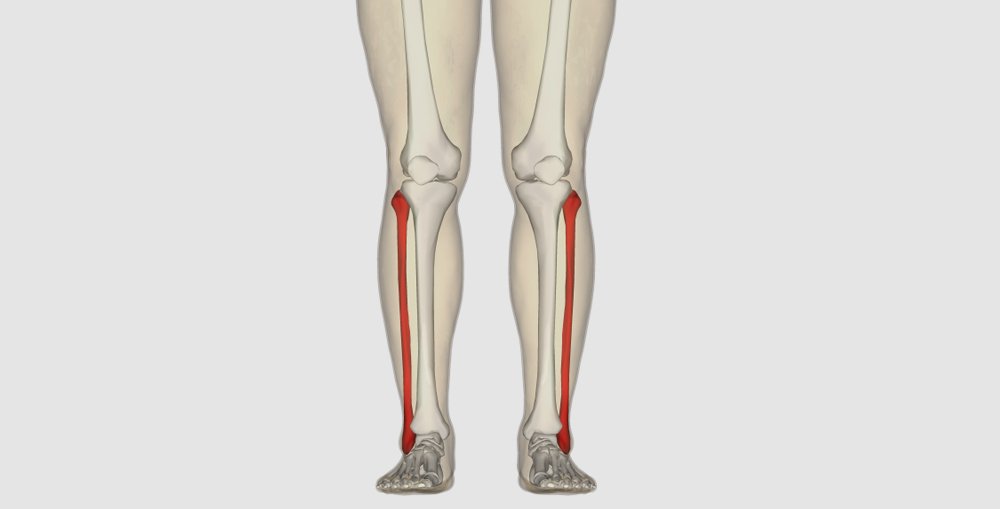A fibula fracture refers to a break in the fibula bone. A forceful impact, such as landing after a high jump or any impact to the outer part of the leg, can cause a fracture. Even spraining or rolling an ankle puts stress on the fibula bone, which can lead to a fracture.
Types of Fibula Fracture
Fractures in Fibula can happen at any point on the bone and can differ in type and severity. Types of fibula fracture include:
- Lateral malleolus fractures occur when the fibula is fractured at the ankle
- Fibular head fractures occur at the upper end of the fibula at the knee
- Avulsion fractures happen when a small chunk of bone that is attached to a ligament or tendon is pulled away from the main part of the bone
- Stress fractures describe a condition where the fibula is injured as the result of repetitive stress, such as hiking or running
- Fibular shaft fractures occur in the mid-portion of the fibula after an injury such as a direct blow to the area
- Fibular shaft fractures occur in the mid-portion of the fibula after an injury like a direct blow to the area
- A fibula fracture can be because of several tough injuries. It is commonly associated with a rolled ankle but can also be because of a fall, awkward landing, or a direct blow to the outer ankle or lower leg.
Fibula fractures are most common in sports, especially those that involve jumping, running, or quick changes of direction such as football, basketball, and soccer.
Symptoms
Swelling, pain, and tenderness are some of the most common signs and symptoms of a fractured fibula. Other signs and symptoms include:
- Incapability to bear weight on the injured leg
- Bruising or bleeding in the leg
- Visible deformity
- Coldness and numbness in the foot
- Tender to the touch
Diagnosis
People who have injured their leg and are facing any of the symptoms should consult a doctor for diagnosis. The following steps occur during the process of diagnosis:
- Physical examination: A thorough examination will be conducted, and the doctor will look if there are any deformities
- X-ray: These are used to see the fracture and know if a bone has been displaced
- Magnetic resonance imaging (MRI): This type of test provides a more detailed scan and can generate detailed pictures of the soft tissues and interior bones
Computerized tomography (CT), bone scans, and other tests may be ordered to make a more precise diagnosis and judge the severity of the fibula fracture.
Treatment
Treatment for a fibula fracture can differ and depends greatly on how severe the break is. A fracture is classified as closed or open.
Open fracture (compound fracture)
In an open fracture, either a deep wound exposes the bone through the skin or the bone pokes through the skin and can be seen.
An open fracture is mostly the result of a high-energy trauma or direct blow, such as a motor vehicle collision or fall. This kind of fracture can also occur indirectly such as with a high-energy twisting type of injury.
The force needed to cause these types of fractures means that patients will often receive additional injuries. Some injuries could be potentially life-threatening.
According to the American Academy of Orthopedic Surgeons, there is 40% to 70% rate of associated trauma elsewhere within the body.
Doctors will treat open fibula fractures immediately and look for any other injuries. Antibiotics will be administered to avoid infection. A tetanus shot will also be given if it is essential.
The wound will be cleaned thoroughly, examined, stabilized, and then covered so that it can heal properly. An open reduction and internal fixation with bone screws and bone plates may be essential to stabilize the fracture. If the bones are not uniting, a bone graft may be essential to promote healing. Orthopedic implants such as Bone plates and bone screws can be accessible from orthopedic instruments suppliers.
Closed fracture (simple fracture)
In a closed fracture, the bone is broken, but the skin is left intact
The goal of treating closed fractures is to put the bone back in place, control the pain, give the fracture time to heal, prevent complications, and return to the normal function. Treatment begins with the elevation of the leg. Ice is used to relieve the pain and lessen the swelling.
If no surgery is required, crutches are used for mobility and a cast, brace, or walking boot is recommended while healing takes place. Once the area has healed, persons can stretch and strengthen weakened joints with the help of a physical therapist.
There are two main kinds of surgery if a patient requires them:
- Closed reduction involves realigning the bone back to its original position. Here, there is no need to make an incision at the site of fracture
- Open reduction and internal fixation realign the fractured bone to its original position using hardware such as bone screws, orthopedic plates, and rods
The ankle will be placed into a cast or fracture boot until the process of healing is complete.








